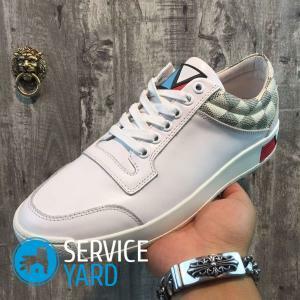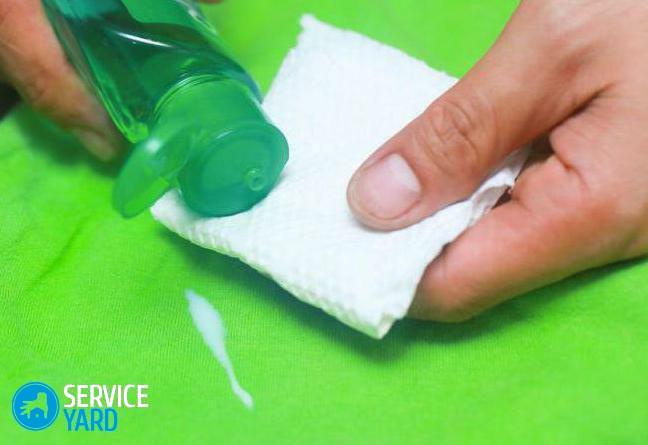Contents:
- Why are silicone insoles needed?
- How to choose silicone insoles?
- How to care for silicone insoles?
If you have not tried on yourself the comfort while walking, which can provide silicone insoles, it's time to buy a pair and finally forget about rubbing, discomfort and feet buzz at the end of the day. A huge amount of positive feedback indicates that with a high probability of using these inserts again, you will not be able to refuse them. But what exactly are silicone shoes for? Which are the best to choose and buy? Is it difficult to look after them?

Why do I need silicone insoles?
The use of silicone can be found in any area of life: from medical implants and baby products to baking dishes and even such trifles as headphones. Due to its strength and durability, accompanied by hypoallergenic, non-toxic and soft, silicone made a real revolution in the production of insoles.
Perhaps now there is no shoe store that would not offer to buy silicone insoles to its customers. Still: they guarantee a comfortable wearing of shoes, and comfort - a satisfied buyer. But do we all need such orthopedic liners and will they suit you?
- Often, silicone insole is recommended after getting injured tendons to reduce their stress while walking.
- After fractures, shock absorption is important during walking, and gel pads provide.
- Orthopedic silicone insole will help with congenital or acquired foot defects, and also eliminate the unpleasant sensations arising from the mismatch between the structure of your foot and the shoe block.
- The depreciation effect also helps reduce the strain on the joints, and in many reviews, people with arthritis or arthrosis share their experience of wearing silicone insoles.
- Pregnancy is another reason to get gel pads. So the legs will swell less, and the load on the joints due to weight gain will decrease.
- Speaking about weight, it is worth mentioning that silicone insole is recommended for wearing people with excess weight to reduce the load when walking.
- The greatest number of reviews about gel inserts is still devoted to the problem of rubbing the foot, especially when it comes to wearing heels. When the insole is too smooth and the foot slides over its surface, the appearance of calluses is difficult to avoid. Another thing silicone!
- Silicone is one of the most preferred materials for long contact with the skin, so if you feel discomfort in the heel due to the inappropriate material of the original insole, buy silicone!
- Even if you do not suffer from leg health problems and you do not rub your shoes, your fingers and heels will say thank you for the extra comfort and amortization. In the end, we go on average 6-8 kilometers a day, and gel pads can contribute to your health in the long run.
By the way
Perforation on some orthopedic liners allows you to absorb sweat more effectively than do fabric insoles, and do not give out the problem of sweating with an unpleasant odor: sweat in silicone, unlike tissue, is not absorbed.

How to choose silicone insole?
When choosing insoles, the main criteria are the model, the price and quality of the products, not the silicone itself, but the adhesive base.
As for the model, the liners will need to be selected according to the site in which you feel discomfort. If this is the front part of the foot, as often happens when wearing heels, then buy pads for the front. If rubbing the heel - special pads under the heel. Full liners are often chosen for general increase in comfort or for solving medical problems, especially if orthopedic pads.
With the price, too, everything is simple: if you just want to add comfort to everyday walking, you can buy inexpensive gel insoles or order them from China on notorious sites. But if you need orthopedic inserts or if you need high-quality shock absorption or an effective struggle with sweat, preference should be given to professional brands, having previously studied the reviews of their products.
And here about the adhesive basis, the information differs from the recall to the recall. On the one hand, like the expensive models, such as "Shol", in orthopedic and sports insoles, the adhesive layer is better, lasts longer, and also such liners can be pasted. On the other hand, the insole, especially in closed shoes, and so it lies horizontally, and it has nowhere to slip, so there are people who believe that for additional comfort it is possible to choose cheap liners.
Advice
Before you glue the gel inserts, go with them a bit to understand the best position. Also, perhaps you will need to glue the half-insole, pushing them in different directions to find the position in which there is no discomfort.

How to care for silicone insoles?
After giving more than a thousand for orthopedic gel inserts or products "Shole", you want them to serve you as much as possible, and for this you need to take care of them properly.
Fortunately, silicone is unpretentious and durable, and there are only a couple of recommendations for caring for it.
- Silicone does not tolerate strong cold, strong heat and direct sunlight, so when the thermometer shows extreme temperatures, it is better to choose the usual insoles.
- To keep the lining for longer, glue it only on a clean, dry surface.
- If you want to re-apply the insole, wash it in warm soapy water and dry it with adhesive side up. Choose only hand washing, do not use bleach and avoid boiling water.
Board
Over time, the adhesive base will no longer hold well, and then the only option is to attach the liners to the glue.
It's time to try the action of silicone insoles on yourself: perhaps, it is you who will leave the next positive feedback about this great product!



